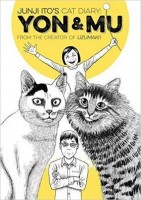It’s a snowy day here in Boston, giving me the perfect excuse to tunnel under a blanket and read a goofy, light-hearted story. My escapism of choice: Bisco Hatori’s latest series, Ouran University Host Club Behind the Scenes!!
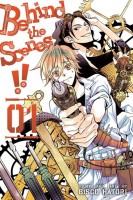 Behind the Scenes!!, Vol. 1
Behind the Scenes!!, Vol. 1
By Bisco Hatori
Rated T, for teens
VIZ Media, $9.99
Behind the Scenes!! embodies what’s good–and not so good–about Bisco Hatori’s storytelling.
In the plus column, Hatori has a knack for writing ensemble pieces in which the principal characters exhibit a genuine fondness for one another. The stars of her latest series are Shichikoku University’s Art Squad, a scrappy outfit that makes props for the Film Club–or, more accurately, clubs, as there are several students groups competing for the Art Squad’s services, each with their own aesthetic objectives. Ranmaru, the series’ protagonist, gets a crash course in film making when he stumbles into the middle of an Art Squad project: a low-budget horror flick. As penance for disrupting the shoot, Ranmaru joins the Art Squad and is quickly pressed into service painting props, folding paper cranes, and building a fake hot spring.
These scenes–in which Ranmaru and the gang tackle set-design challenges–are among the series’ most enjoyable. Not only do they give us a sneak peek at the movie-making process, they also show us how the club members’ friendly overtures embolden the timid, self-doubting Ranmaru to let go of his painful childhood and become part of a community. In one exchange, for example, Ranmaru tells a fellow squad member about a black-and-white film that made a powerful impression on him. Hatori cuts between scenes from this imaginary film and Ranmaru’s face, registering how powerfully Ranmaru identified with the film’s principal character, a toy robot who dreams of flying. The symbolism of the toy is hard to miss, but the directness and simplicity with which Hatori stages the moment leavens the breezy tone with a note of poignancy.
In the minus column, Hatori often strains for comic effect, overwhelming the reader with too many shots of characters mugging, shouting, and flapping their arms. The Art Squad’s interactions with various student directors give Hatori license to indulge this tendency; the auteurs’ snits and whims frequently force the Art Squad members to behave more like the Scooby Doo gang–or Hollywood fixers–than actual college students juggling coursework and extra-curriculars. (The Art Squad even has a goofy dog mascot.)
At the same time, however, these wannabe Spielbergs bring out the best in Hatori’s draftsmanship. Each one’s personality is firmly established in just a single panel: one looks like a refugee from Swingin’ London (or perhaps an Austin Powers film); another dresses like a Taisho-era author, swanning around campus in a yukata; and a third sports a shaggy mane, Buddy Holly glasses, and a female entourage. The efficiency with which Hatori introduces these characters, and the range of personalities they embody, demonstrate just how crisp and distinctive her artwork can be. That Hatori’s heroes are visually bland by comparison says less about her skills, I think, than it does her desire to make Ranmaru’s new “family” seem normal–well, as normal as anyone who specializes in making fake zombie guts can be.
The bottom line: Tentatively recommended. If Hatori can tone down her characters’ antic behavior, Behind the Scenes!! could be a winner.
Reviews: Sean Gaffney and Michelle Smith post a fresh crop of Bookshelf Briefs. Also new at Manga Bookshelf: Sean tackles the first volume of orange (no, that’s not a typo), Anna N. reviews Takeshi Obata’s kiddie-thriller School Judgment, and Ash Brown weighs in on Hiroaki Samura’s stylish (and bloody) manga Die Wergelder. Further afield, translator Jocelyn Allen posts her annual doujinshi round-up.
Sara Dempster on The Angel of Elhamburg (No Flying No Tights)
Matthew Warner on vol. 5 of Ani-Emo (The Fandom Post)
Michael Burns on vols. 7-8 of Barakamon (AniTAY)
Johanna Draper Carlson on vol. 12 of Chi’s Sweet Home (Comics Worth Reading)
Adam Brunell on vol. 12 of Deadman Wonderland (ComicSpectrum)
SKJAM! on Dream Fossil (SKJAM! Reviews)
Josh Begley on vol. 2 of Emma (The Fandom Post)
Patrick Moore on vol. 1 of Honey So Sweet (Bentobyte)
Sean Gaffney on vol. 1 of How to Raise a Boring Girlfriend (A Case Suitable for Treatment)
Ken H. on Junji Ito’s Cat Diary: Yon & Mu (Sequential Ink)
Kory Cerjak on vol. 13 of Magi (The Fandom Post)
Megan R. on Millennium Prime Minister (The Manga Test Drive)
Rebecca Silverman on vol. 12 of My Little Monster (Anime News Network)
Exile on vol. 1 of My Monster Secret (AniTAY)
Jocelyn Allen on Night Worker (Brain vs. Book)
Matthew Warner on vol. 2 of Puella Magi Tart Magica (The Fandom Post)
Matt on vol. 5 of A Silent Voice (AniTAY)
Terry Hong on vol. 2 of Ultraman (Book Dragon)
Nick Creamer on vol. 2 of UQ Holder! (Anime News Network)
Frank Inglese on Uzumaki Naruto: Illustrations (Snap 30)
Sheena McNeil on vol. 3 of Yo-Kai Watch (Sequential Tart)
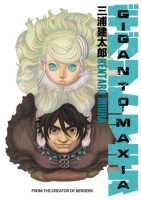
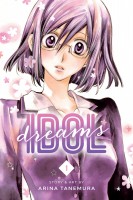 Idol Dreams, Vol. 1
Idol Dreams, Vol. 1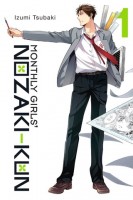 Monthly Girls’ Nozaki-Kun, Vol. 1
Monthly Girls’ Nozaki-Kun, Vol. 1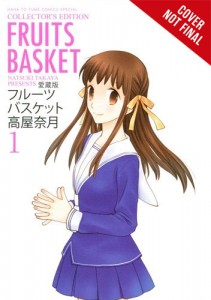 BRIGID:
BRIGID: 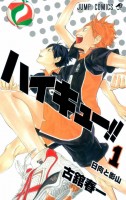 DEB: I’m most excited about the trend where manga publishers are taking chances on titles and genres that were once considered the third rail/extra risky to license, like sports manga. Super excited about the Summer 2016 arrival of the first volumes of
DEB: I’m most excited about the trend where manga publishers are taking chances on titles and genres that were once considered the third rail/extra risky to license, like sports manga. Super excited about the Summer 2016 arrival of the first volumes of 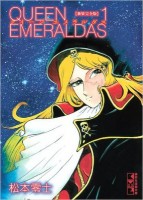 Another example of manga publishing biz in the US dipping their toes into riskier fare is the upcoming publication of three classics:
Another example of manga publishing biz in the US dipping their toes into riskier fare is the upcoming publication of three classics:  KATE: I share Deb’s excitement about classic manga. It’s a risky undertaking for any publisher, especially when so many readers are young (under 20) and not particularly curious about the medium’s roots. It will be interesting to see if UDON can pitch Rose of Versailles to the Shojo Beat crowd; though the artwork is a little dated, the melodrama, costumes, and kick-butt female lead have obvious parallels with titles in VIZ, Kodansha, and Yen’s catalogs. Who knows? It could be a surprise hit.
KATE: I share Deb’s excitement about classic manga. It’s a risky undertaking for any publisher, especially when so many readers are young (under 20) and not particularly curious about the medium’s roots. It will be interesting to see if UDON can pitch Rose of Versailles to the Shojo Beat crowd; though the artwork is a little dated, the melodrama, costumes, and kick-butt female lead have obvious parallels with titles in VIZ, Kodansha, and Yen’s catalogs. Who knows? It could be a surprise hit.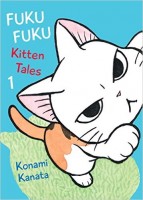 In the just-for-fun department,
In the just-for-fun department, 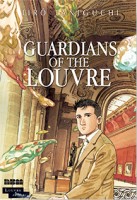

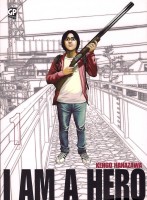
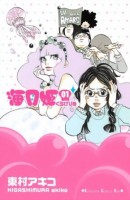
 KATE: I’m consistently impressed by Seven Seas’ tenacity and business acumen, but not so impressed with the actual titles they license. Last year, however, Seven Seas published The Ancient Magus’ Bride and acquired Orange, neither of which fit the profile of a typical Seven Seas manga; if anything, both seemed like the kind of titles that CMX used to license. That gamble has paid off with Bride, which recently cracked the NY Times Manga Bestseller list. My prediction: Seven Seas will continue to make bold licensing choices in 2016, even as vampire-monster girls remain their core business.
KATE: I’m consistently impressed by Seven Seas’ tenacity and business acumen, but not so impressed with the actual titles they license. Last year, however, Seven Seas published The Ancient Magus’ Bride and acquired Orange, neither of which fit the profile of a typical Seven Seas manga; if anything, both seemed like the kind of titles that CMX used to license. That gamble has paid off with Bride, which recently cracked the NY Times Manga Bestseller list. My prediction: Seven Seas will continue to make bold licensing choices in 2016, even as vampire-monster girls remain their core business.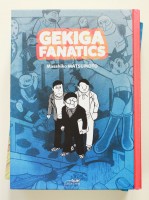 If any publishers are reading this, I have a very specific licensing request. There’s a small French publisher called
If any publishers are reading this, I have a very specific licensing request. There’s a small French publisher called 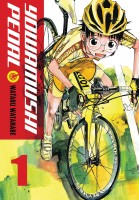 Best New Series: Yowamushi Pedal
Best New Series: Yowamushi Pedal Best New Shonen Series: One-Punch Man
Best New Shonen Series: One-Punch Man Best New Romance Manga: Horimiya
Best New Romance Manga: Horimiya Best New Gag Manga: Junji Ito’s Cat Diary: Yon & Mu
Best New Gag Manga: Junji Ito’s Cat Diary: Yon & Mu Best Historic Title: Ludwig B.
Best Historic Title: Ludwig B. Best Reprint Edition: Planetes
Best Reprint Edition: Planetes Best Manga I Thought I’d Hate: Haven’t You Heard? I’m Sakamoto
Best Manga I Thought I’d Hate: Haven’t You Heard? I’m Sakamoto Worst Manga I Thought I’d Love: JoJo’s Bizarre Adventure, Part 1: Phantom Blood
Worst Manga I Thought I’d Love: JoJo’s Bizarre Adventure, Part 1: Phantom Blood Most Disappointing Manga: Shigeru Mizuki’s Hitler
Most Disappointing Manga: Shigeru Mizuki’s Hitler